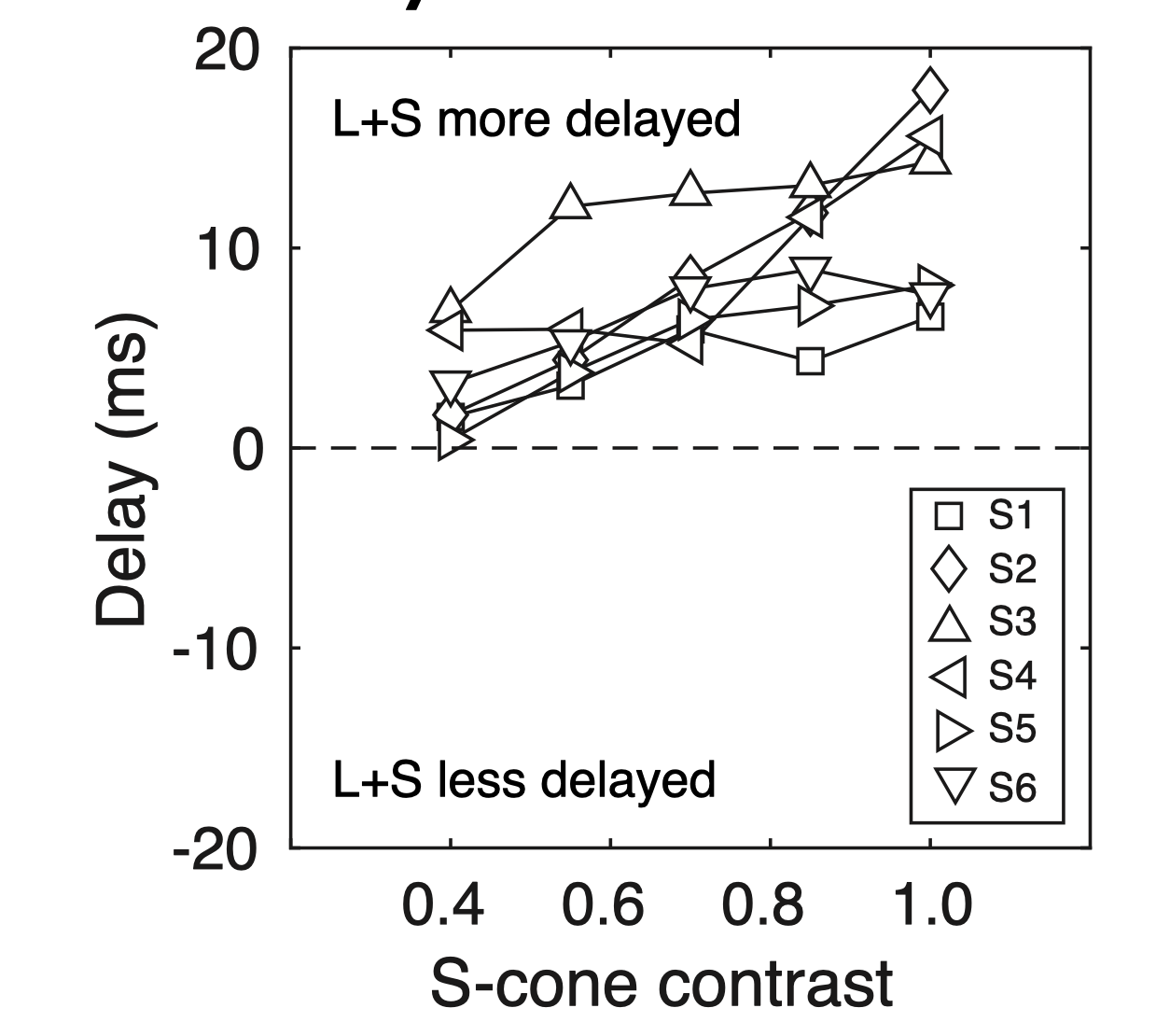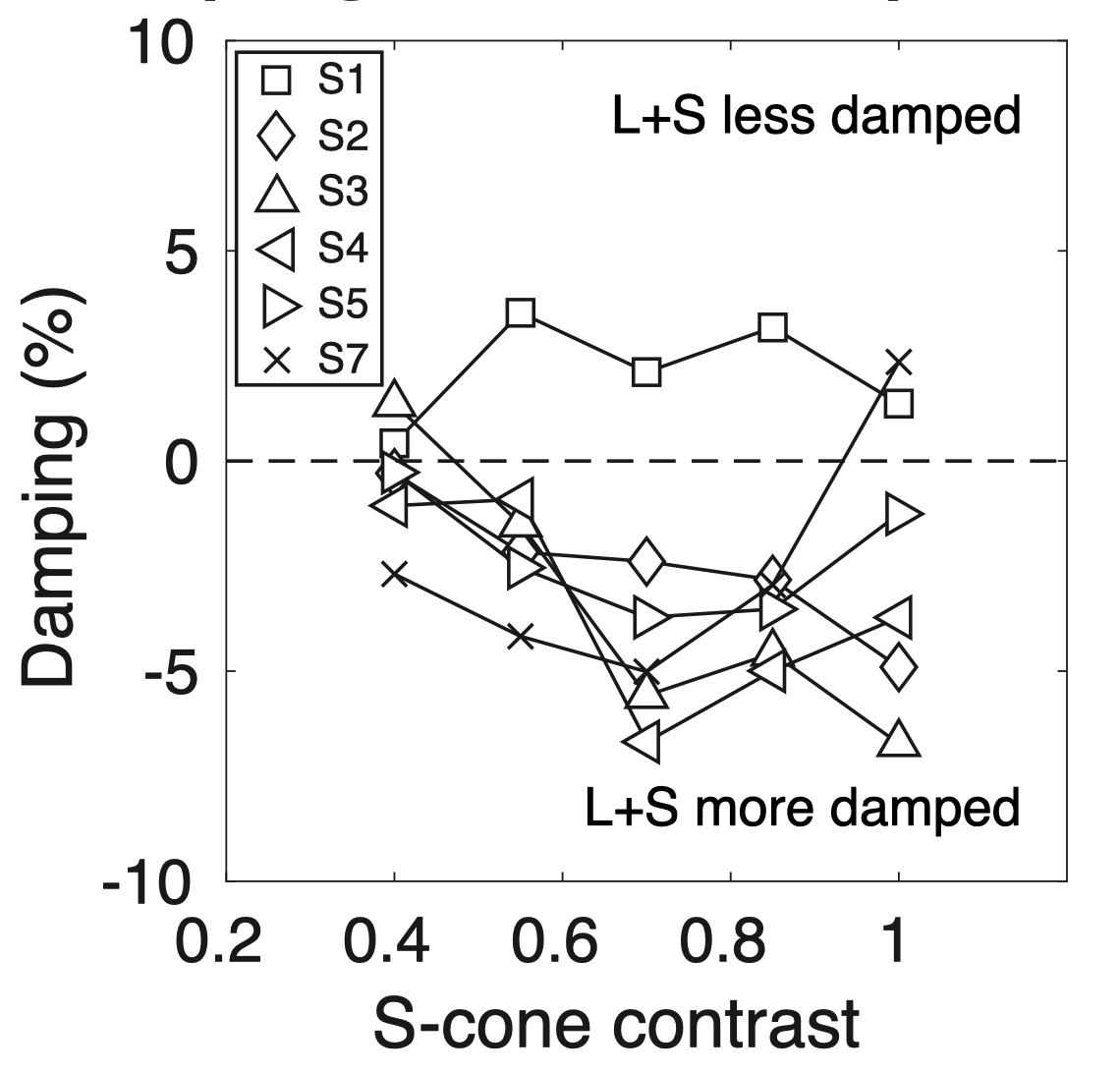Temporal processing in the visual system
Probing how color signals in the visual system are combined across time
Signals in the human visual system typically vary in temporal latency (delay) and integration period depending on the type of information they carry. For example, in color processing, the short-wavelength-sensitive cone photoreceptors in the retina have longer latencies and integration periods than the long-wavelength-sensitive cones. During vision, both types of cones are modulated simultanously. How are their signals combined across time during motion? The answer is not straightforward. Does the visual system wait for all information to arrive, or does it compute motion with partial information?
To address this question, we leverage a classic visual illusion, the Pulfrich effect. Using a device known as a haploscope, we present moving bars that have different colors between the left and right eyes to participants. These color differences between the eyes cause different processing latencies between the eyes. Because the bars are moving, the processing latencies create a binocular disparity signal, causing participants to misperceive the depth of the stimulus.

From the magnitude of the Pulfrich effect, we inferred the processing delays and ‘damping’ due to temporal integration associated with different color stimuli. As the contrast of the S-cone modulation increases, both the delay and damping of the combined signal increase. Our results suggest that during motion perception, the combined motion signal does not wait for all information to arrive from the slower (more delayed) S-cone channel, but the extent to which it discards the information depends on the contrast of the S-cone component of the stimulus.

